
Remember the days when you had to sprinkle the exact keyword in your content a certain number of times to help search engines understand your webpages?
Well, those days are long gone.
In 2013, Google launched Hummingbird. It was likely the first attempt by the search giant to move away from relying on the use of keywords. The search algorithm now parsed phrases.
Next, in 2015, Google launched RankBrain. With the machine learning-based update, it even started understanding the context and exact meaning behind search queries.
If search engines have evolved, then you should too.
You can’t remain fixated on the old strategy of creating content around longtail keywords alone.
Instead, you need to move towards thinking in terms of topics over keywords.
Otherwise known as the hub and spoke SEO model.
3 Benefits of a Hub and Spoke SEO Strategy
Hub and spoke SEO is the future of content and keyword strategy. What it means is connecting similar-themed content and interlinking them, then creating a 10x pillar page that acts as a content hub.
Here's a video by HubSpot that illustrates the model. Note that the pillar page is equivalent to the hub and clusters are equivalent to spokes.
This topic cluster model works for three main reasons.
1. Your Keyword Research Process Becomes Ultra-simplified
You’ll no longer need to search for things to write about for your blog.
In 2015, Nat Eliason ran marketing and content at Sumo. He developed a cornerstone article covering 130 ways to get more traffic, and at first, used an external resource link to cover each way.
Over time, he published content about each traffic strategy in detail on the Sumo blog itself. Then, he replaced all the external links with internal links to their own content.
The cornerstone article facilitated the creation of this spreadsheet that served as the base of the Sumo content plan.
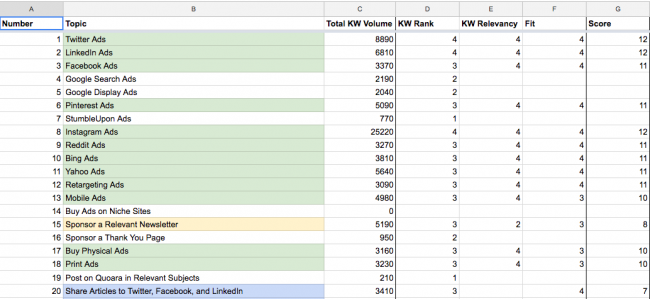
This strategy helped Sumo cross 100k visitors!
2. You Can Cover a Subject Comprehensively and Lower Your Bounce Rate
Since you’re creating an ultimate resource on a subject, your visitors will stay on your site longer instead of relying on external sources. It's like being the Wikipedia of your niche!
Overall this lowers your bounce rate and improves engagement because of the cohesive nature of the content.
3. The Site Structure Is Better for SEO and User Experience
As you create more content on the topic around more longtail keywords, the internal links between pages will earn you higher SERP placements.
Google allocates a crawl budget to every website, and proper internal linking will help Google crawl your site accurately and prevent crawl waste.
In her extensive research, Anum Hussain found that internal links to related content helped in ranking as well.
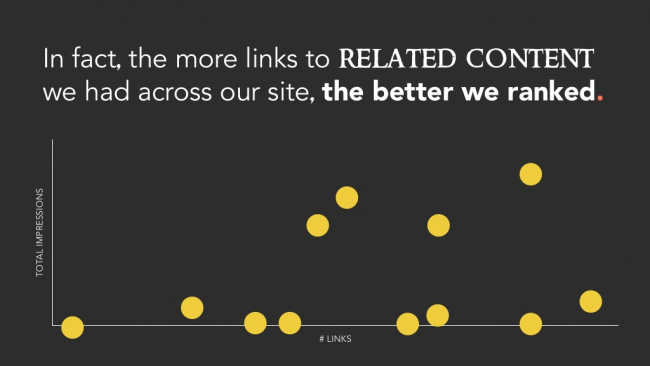
Also, consumer search behavior has become more intricate. Searchers no longer use keywords alone—instead, they comfortably pose complex questions inside the search bar.
A well-designed hub page with a table of contents eases navigation for your users.
And what do better SERP visibility and user experience equate to? That’s right: more traffic and conversions.
Now that we’re down with the benefits, let's dive into the five simple steps to implement the hub and spoke SEO model on your site.
1. Research Relevant, Competitive Short-tail Keywords (Your Hub Page)
If you already have an extensive blog archive, then you’ll need to find about 20 posts that have a similar theme.
Next, research the relevant “broad keyword” that could overarch these keywords.

If you have comparatively fewer articles on your site, then you should begin your keyword research from scratch.
Start with the top three core problems of your buyer persona. Or, survey your audience.
The purpose is to group the problems and map relevant short-tail keywords to them. Make sure that the short-tail keywords have sufficient volume and that you can write more than 20 articles on each one.
You'll then write a comprehensive post on this short-tail keyword and cover the subject broadly (think of it as the table of contents).
This is your hub page.
Leslie Ye took on the task of updating HubSpot's content into clusters and overhauled hub pages. Here’s the question she recommends asking for choosing your hubs:
“Would this page answer every question the reader who searched X keyword had, and is it broad enough to be an umbrella for 20-30 posts?”
If you’re still not sure if your keyword is a viable hub, explore the Nightwatch guide on SEO segmentation. They've done a great job of explaining the different types of keywords you could use to dominate niche markets.
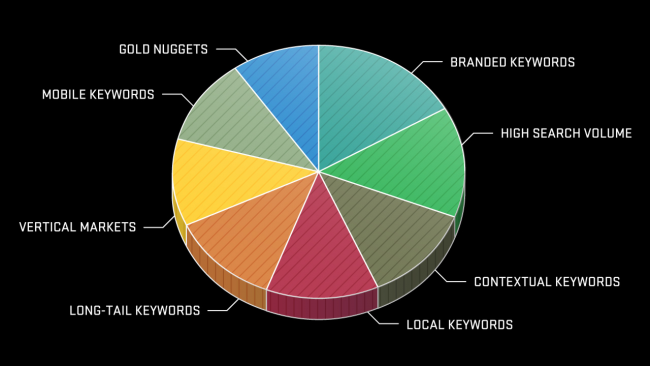
2. Research Longtail Keywords to Find Sub-topics (Your Spokes)
Once you’re settled with your main topic (the hub), you then need to come up with the sub-topics (or the spokes) for your central hub.
These can be longtail keywords that cover various specific angles on the broad topic.
Start your research with keyword research tools. Suppose you want to create a hub page on “content marketing.” So, you could use something like AnswerThePublic to get the top questions around the subject.

You can also use the related search suggestions at the bottom of the search results for a few sneaky longtail keywords.
If you were a travel company that sold travel packages to Japan, then you could make use of a few keywords like these, aye?

Also, you can reverse-engineer the top competitors for your keyword.
For instance, say you went all adventurous and targeted beginner bloggers (good luck with choosing such a competitive niche!).
You search for the keyword "how to start a blog" (global search volume over 125k) and find the top result by Ryan Robinson.
You also find that Ryan isn’t following the hub and spoke SEO model. But he has broken down his massive guide (with over 30,000 words including comments) into 10 steps.
The table of contents at the top of the article is superb for thinking about spokes. They can serve as the guiding light in your spoke keyword research.
Just think—couldn’t you write long-form content pieces on each of the following sub-headings in this table of contents?
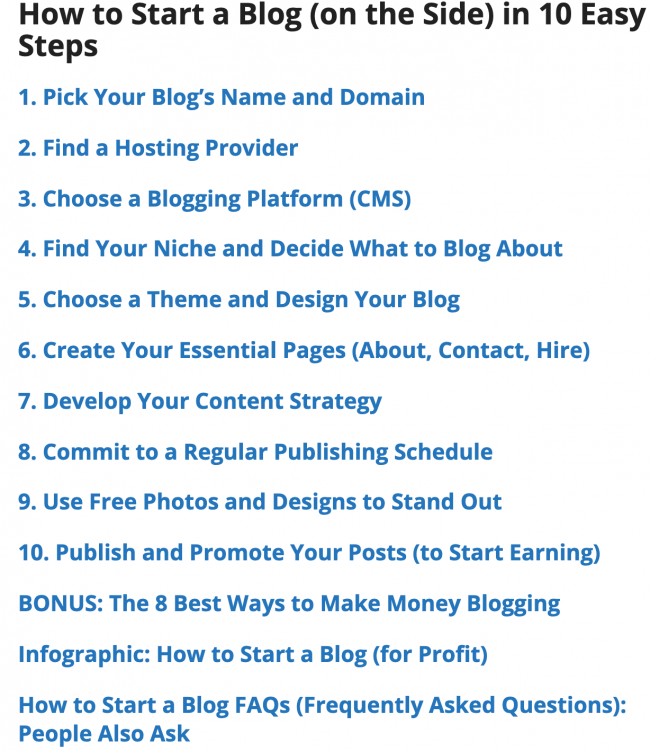
Remember the idea is to cover all the problems of your customer around the broad subject and give them an end-to-end resource.
Once you have a list of longtail keywords, choose the top 15-20 keywords based on their business value.
For example, if you're running an e-commerce store, you could find spokes from your customers' most frequently asked questions about your best-selling products, and then map them to keywords with decent search volume.
If you’re a visual thinker, these mind map templates by Venngage will help in establishing a clear topic and keyword hierarchy.
3. Practice Proper URL Structure and Internal Linking
For proper technical SEO, you need a robust site architecture. Doing this will lead all of your spoke pages and the hub page to fare better in search results.
Use internal links to help search engines index your content and understand the depth with which you’ve covered a topic. Interlinking also helps search bots establish that there’s a semantic relationship between the content on the pages.
And of course, remember to link internally from the spokes to the hub to emphasize it.
The ideal URL structure you should follow is:
- yourawesomesite.com/hub/
- yourawesomesite.com/hub/spoke-1
- ...
- yourawesomesite.com/hub/spoke-20
In his SEO marketing hub, Brian Dean has even explicitly used the word "hub" in its URL structure. And the spokes are further branched out under it.
Here are a few URLs from his hub:
- backlinko.com/hub/seo
- backlinko.com/hub/seo/seo-writing
- backlinko.com/hub/seo/architecture
- backlinko.com/hub/seo/pogosticking
- backlinko.com/hub/seo/seo-results
He uses breadcrumb links and a navigation link in the left sidebar for moving around the hub.

If you’re practicing historical content optimization, then it’s more difficult to establish a hierarchy without changing the URLs of existing blog posts.
In such cases, you can simply create a hub page that covers the subject broadly, and link to the related posts (the spokes) from the hub page content organically.
For example, James Clear created his hub page on creativity after he'd already been writing on various related subjects for a long time. That means it wasn’t easy to follow the clear URL structure we just discussed.
His URL structure is somewhat random and here are a few examples:
- jamesclear.com/creativity (hub page)
- jamesclear.com/albert-einstein-desk
- jamesclear.com/ira-glass-failure
- jamesclear.com/anthony-trollope
- jamesclear.com/professionals-and-amateurs
- jamesclear.com/book/the-war-of-art
On the hub page, James tries to link to his spoke articles while writing about creativity organically.
However, the ones that couldn’t fit in still found a place at the bottom of the page under “All Creativity Articles.”
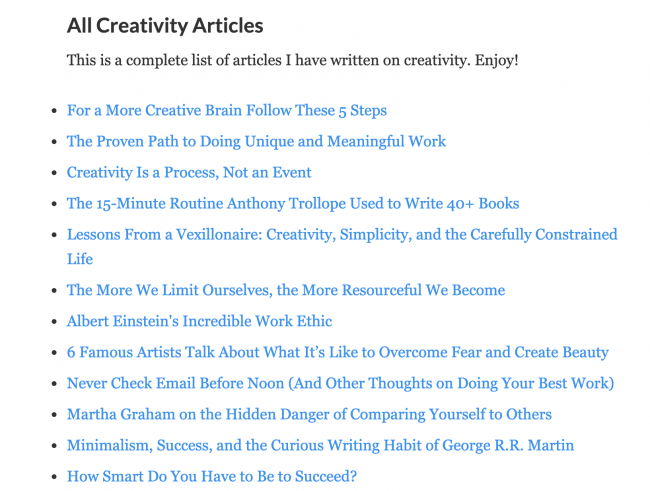
James also links back to the creativity hub page at the top of every spoke article.
If you’re familiar with WordPress, that’s the place where the category of your posts appears.

Even without following the URL structure, this hub page still ranks on Google's first page for the keyword “creativity.” Great job, James!
4. Promote Your Hub and Spokes
To do this, you can either promote all your spoke articles first and then later the hub, or you can promote all of them together.
The way you approach this step is dependent on your editorial calendar and dependent on you.
If you already have spoke articles, then you could update them and do a content relaunch. Also try acquiring more backlinks to your hub page and build its authority. The hub and spoke internal linking structure will help ensure the link juice is distributed across your site.
Pat Flynn launched his fully-prepared affiliate marketing hub with a single email. He waited for six months for his team to create all the content together. Then, he sent an email to his audience to announce it.
The page had previously existed on his site with less than 1,000 words, but he upgraded it to follow the hub and spoke SEO framework. Here’s the tweet he sent out to promote it once it was live.
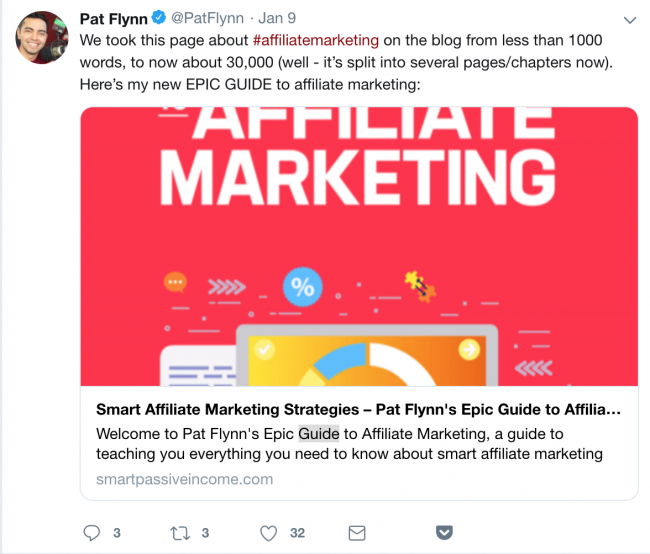
An alternative method is to promote each article as you publish it, as per your editorial calendar.
For instance, James Clear used to send emails of his new articles twice a week, for more than a couple of years.
Later, you can then create your hub page that contains all your spoke articles. This method gives you a fair bit of flexibility as well.
It's also worthwhile repurposing your content into an email course or pdf, and offering it to your prospects. It can be a great way to land new subscribers. This is what Pat did for his affiliate marketing hub, by repurposing it into a downloadable guide.

5. Measure Your Performance
In the long term, your hub and spoke articles should start raking in evergreen traffic rather than flatlining.
As search engines discover and establish you as the authority on your covered subject, they'll start boosting your rankings and sending more visitors. And once a new visitor lands on your site, they'll happily consume as much information as they like—as well as share it with their friends!
Hub and spoke SEO is a terrific way to organize your content creation efforts, exemplify the user experience of your site, and land in the good books of search engines.
Follow these five steps to create your first hub and spokes!
Chintan currently leads the content at The Ecommerce Academy.










